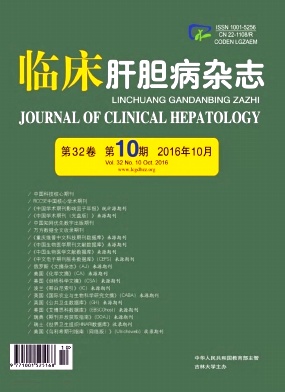|
[1]WANG FS,FAN JG,ZHANG Z,et al.The global burden of liver disease:the major impact of China[J].Hepatology,2014,60(6):2099-2108.
|
|
[2]FAN JG,YAN SY.Metabolic syndrome and fatty liver[J].J Clin Hepatol,2016,32(3):407-410.(in Chinese)范建高,颜士岩.代谢综合征与脂肪肝[J].临床肝胆病杂志,2016,32(3):407-410.
|
|
[3]JI XL,GE YD,AN MM,et al.Relationship between nonalcoholic fatty liver disease and metabolic syndrome[J].Chin J Clin Pharmacol Ther,2014,19(6):666-670.(in Chinese)季学磊,葛艺东,安民民,等.非酒精性脂肪肝与代谢综合征的临床相关性分析[J].中国临床药理学与治疗学,2014,19(6):666-670.
|
|
[4]The Chinese National Work-shop on Fatty Liver and Alcoholic Liver Disease for the Chinese Liver Disease Association.Guidelines for management of nonalcoholic fatty liver disease:an updated and revised edition[J].J Clin Hepatol,2010,26(2):120-124.(in Chinese)中华医学会肝病学分会脂肪肝和酒精性肝病学组.非酒精性脂肪性肝病诊疗指南[J].临床肝胆病杂志,2010,26(2):120-124.
|
|
[5]LI J,CHENG WJ,MA YH.Research progress of adiponectin in cardiovascular disease[J].China Med Herald,2016,13(9):76-79.(in Chinese)李晶,程文俊,马宇虹.脂联素在心血管疾病中的研究进展[J].中国医药导报,2016,13(9):76-79.
|
|
[6]LI YL,YANG M,FU BY,et al.The changes and significance of serum cholesterol in poctients with nonalcoholic fatty liver disease[J].Shanxi Med J,2011,40(7):705-706.(in Chinese)李异玲,杨淼,傅宝玉,等.非酒精性脂肪肝病患者血清内脂素的变化及意义[J].山西医药杂志,2011,40(7):705-706.
|
|
[7]LUO N,WANG X,ZHANG W,et al.AdR1-TG/TALLYHO mice have improved lipid accumulation and insulin sensitivity[J].Biochem Biophys Res Commun,2013,433(4):567-572.
|
|
[8]CHRISTIANSEN T,PAULSEN SK,BRUUN JM,et al.Diet-induced weight loss and exercise alone and in combination enhance the expression of adiponectin receptors in adipose tissue and skeletal muscle,but only diet-induced weight loss enhanced circulating adiponectin[J].J Clin Endocrinol Metab,2010,95(2):911-919.
|
|
[9]HOLLAND WL,ADAMS AC,BROZINICK JT,et al.An FGF21-adiponectin-ceramide axis controls energy expenditure and insulin action in mice[J].Cell Metabolism,2013,17(5):790-797.
|
|
[10]ANTAL M,REGOLY MA.New approach in the interpretation of adipose tissue[J].Orv Hetil,2010,151(31):1252-1260.
|
|
[11]YANG Z,WANG X,WEN J,et al.Prevalence of non-alcoholic fatty liver disease and its relation to hypoadiponectinaemia in the middle-aged and elderly Chinese population[J].Arch Med Sci,2011,7(4):665-672.
|
|
[12]LI Z,XUE J,CHEN P,et al.Prevalence of nonalcoholic fatty liver disease in mainland of China:a meta-analysis of published studies[J].Gastroenterol Hepatol,2014,29(1):42-51.
|
|
[13]NELSON JE,WILSON L,BRUNT EM,et al.Relationship between the pattern of hepatic iron deposition and histological severity in nonalcoholic fatty liver disease[J].Hepatology,2011,53(2):448-457.
|
|
[14]UTZSCHNEIDER KM,ARGAJOLI A,BERTOLDO A,et al.Serum ferritin is associated with non-alcoholic fatty liver disease and decreased B-cell function in non-diabetic men and women[J].J Diabetes Complications,2014,28(2):177-184.
|














 DownLoad:
DownLoad: